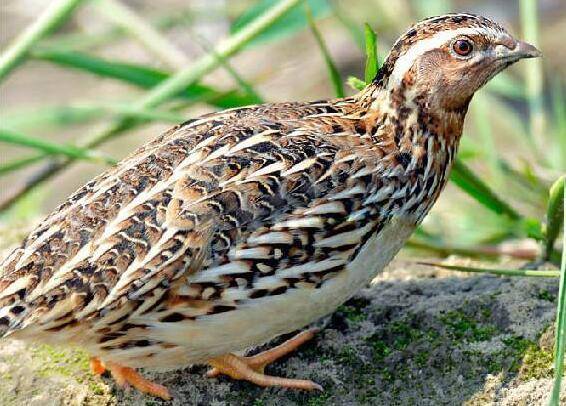Coturnix japonica
IUCN
LCBasic Information
Scientific classification
- name:Coturnix japonica
- Scientific Name:Quail, Japanese quail
- Outline:Landfowl
- Family:Galliformes Phasianidae Coturnix
Vital signs
- length:14-20cm
- Weight:55-110g
- lifetime:2year
Feature
Birds are naturally timid and do not like to interact in groups.
Distribution and Habitat
It breeds in Heilongjiang, Jilin, Liaoning, northeastern Inner Mongolia and northeastern Hebei; it winters and migrates in Hebei and the vast areas south of the Yellow River in China, west to Qinghai Lake, south to Yunnan, Guangdong, Guangxi, Fujian, Taiwan, Hong Kong and Hainan Island. It is widely distributed in Eurasia, West Asia, North Africa and some islands in the Atlantic Ocean. It lives in farmland, grassland and semi-desert areas. It is secretive and can sneak in the grass. When startled, it will fly close to the ground for a distance and then land in the grass. When the male is courting, it will make calls both during the day and at night.
Appearance
A small quail with dark brown upper body, densely covered with dark brown horizontal stripes and yellow vertical stripes. The chin, throat and upper neck are yellowish brown, with a prominent black spot under the eyes and a prominent white eyebrow. The iris is dark brown, the beak is blue-gray, and the feet are flesh-colored.
Details
Quail is a small, round, gray-brown quail. The upper body has brown and black horizontal stripes and long yellow spear-shaped stripes. The lower body is yellow, with black stripes on the chest and flanks. The head has stripes and long eyebrows that are almost white. The iris is reddish brown, the corners of the mouth are blue, and the tarsus is light yellow. There are no subspecies, but there are many breeds of domestic quail based on this. It lives in low mountains and hills, dry grasslands, and rocky areas with abundant forests. It likes to move in groups of several. It mainly feeds on twigs and seeds, and also eats insects. It nests in grass, field edges or shrubs, laying 7-14 eggs per nest, and the chicks hatch in about 17 days. It is a common local bird. It is distributed in eastern Asia, northeastern South Asia, and Southeast Asia. It breeds in the northern part of China and winters in the south, southeast, and southwest.

Quails usually live in small groups of 3-5 except during the breeding season. They are good at hiding and often sneak in bushes and grass. Generally, they rarely take off. They often suddenly rush out from under your feet when you walk to them, and they fall into the grass again after not flying far. When flying, they flap their wings quickly, fly straight and fast, and often fly low to the ground. Their calls are unique whistles. It mainly feeds on plant foods such as young branches, leaves, buds, berries, seeds, grass seeds, etc. It also eats crops such as grains, beans, insects, insect larvae, and small invertebrates. It often forages in grasslands and farmlands, and hides in bushes or thorns all day on cloudy and rainy days.
In 2009, there were about 100,000 wild quails in the world, of which about 50% were in China (including 10% of migratory birds). From 1970 to 2009, the total number showed a downward trend. Its main threats are loss of habitat due to agriculturalization, which is most widespread in Asia; and poaching.








